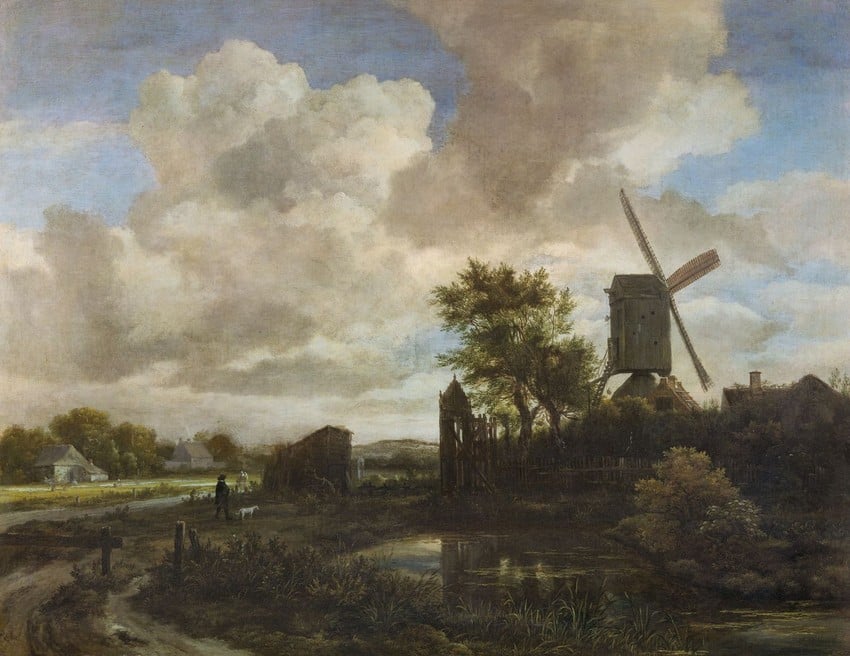
Dutch Landscapes
Dutch Landscapes
PAULUS POTTER (ENKHUIZEN 1625-AMSTERDAM 1654)
"The Young Thief "
Signed and dated 1649Oil on panel | 53.9 x 77.7 cm (support, canvas/panel/str external) | RCIN 400527
The Young Thief by Paulus Potter (1625-54) offers a narrative which can be easily read. It is a beautiful summer’s evening; a landowner (or his agent) rides over wide fertile meadows from the country house in the background to visit one of the farms on the estate; the farmer’s wife is milking. Suddenly the peace of this rural idyll is shattered: a bitch starts barking and snarling; a boy screams; a cockerel crows in alarm and a sheep bleats. All this because the boy has stolen two newborn puppies, one of which he has already dropped and lies sprawling on the floor; the other he will need to surrender when the bitch gets more of him than the hem of his shirt.
At one level this episode teaches the simple country lore that one should be wary of approaching any animal with young. At another it seems to illustrate a more universal principle – that each species loves its own. Just as the farmer’s wife loves her thieving son, so the stallion loves its mare and can be seen nuzzling in the stable; the cows and the sheep similarly pair off two-by-two (though whether bull or ram is present cannot be determined). Let nobody then separate a bitch from her suckling puppies. The supporting cast in this farmyard drama are presented even more anthropomorphically than in A Young Bull and Two Cows by Potter (Royal Collection, RCIN 404585) and seem to look on bemused and indulgently (the bleat of the sheep deliberately appears as laughter).
Though this narrative was described in the 1819 inventory of paintings at Carlton House, this modern Aesop’s fable is much less appreciated now. The overstated expressions seem to us more appropriate for children’s illustration or even animation than painting.
Signed and dated: 'Paulus. Potter. f. 1649.'
Text adapted from Dutch Landscapes, London, 2010
At one level this episode teaches the simple country lore that one should be wary of approaching any animal with young. At another it seems to illustrate a more universal principle – that each species loves its own. Just as the farmer’s wife loves her thieving son, so the stallion loves its mare and can be seen nuzzling in the stable; the cows and the sheep similarly pair off two-by-two (though whether bull or ram is present cannot be determined). Let nobody then separate a bitch from her suckling puppies. The supporting cast in this farmyard drama are presented even more anthropomorphically than in A Young Bull and Two Cows by Potter (Royal Collection, RCIN 404585) and seem to look on bemused and indulgently (the bleat of the sheep deliberately appears as laughter).
Though this narrative was described in the 1819 inventory of paintings at Carlton House, this modern Aesop’s fable is much less appreciated now. The overstated expressions seem to us more appropriate for children’s illustration or even animation than painting.
Signed and dated: 'Paulus. Potter. f. 1649.'
Text adapted from Dutch Landscapes, London, 2010







